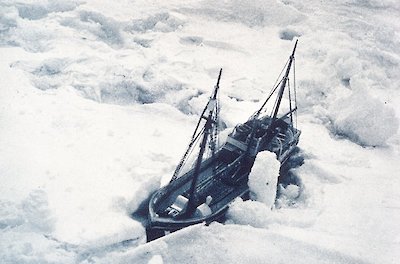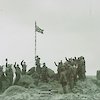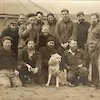ANARE is created
Australian interest in Antarctica revived after the War. The immediate interest was in Antarctic meteorology and in 1947 a number of reconnaissance flights were conducted over the Southern Ocean but the principal aim was to establish permanent scientific stations on the Antarctic continent.
As a result of representations to the Government by Sir Douglas Mawson an inter-departmental committee recommended, in December 1946, that firm commitment be made to an Antarctic expedition. The government then moved quickly to approve the immediate establishment of meteorological and scientific research stations on Heard Island and Macquarie Island and the use of Wyatt Earp to reconnoitre a site for a permanent station on the Antarctic continent.
To coordinate preparations for the work an Executive Planning Committee was established in May 1947, with Sir Douglas Mawson as advisor. Group Captain Stuart Campbell, who had been in charge of BANZARE flying operations, was appointed chief executive officer of the expedition, which in August 1947 was given the formal title, Australian National Antarctic Research Expedition (ANARE). Dr Phillip Law, a physics lecturer from the University of Melbourne, was appointed to plan and organise the scientific program.
In the first season of ANARE, using the naval vessel LST 3501, stations were established on Heard Island, in December 1947, and at Macquarie Island, in March 1948. Meanwhile, under Karl Oom’s command, Wyatt Earp proceeded to the Antarctic to reconnoitre a site for a continental station. Although weather and ice conditions prevented the small ship from reaching the coast, the voyage achieved some of its scientific aims, notably in Law’s cosmic ray research. However, it was clear that Wyatt Earp was not suitable for the work planned for ANARE and another six years were to pass before Australia could secure a vessel adequate for the task.



